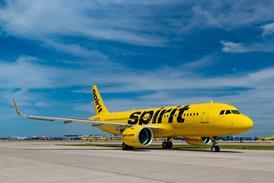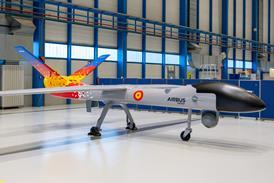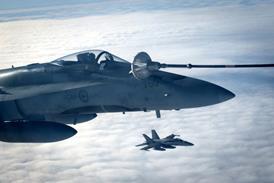For carriers looking to farm out maintenance, strategic sourcing can generate savings and enable greater focus on core competencies. The trick is to identify processes that yield the greatest gains and deliver a competitive advantage
Airlines under pressure from rising fuel prices and stiff fare competition are increasingly looking to outsource maintenance. Despite engaging in aggressive internal profit improvement initiatives, most airlines still report meagre results during what should be their most lucrative months.
Strategic sourcing represents untapped value for airlines choosing to outsource maintenance. Through the strategic sourcing process, a service provider’s incentives to improve efficiency can be better aligned with the need to lower costs. To date, airlines have largely shielded suppliers from the brunt of the industry’s increases in security costs, fuel prices and fare competition. As a result, value has shifted dramatically from airlines to airline suppliers. Establishing good sourcing practices can help airlines to regain some of that value.
This is supported by a survey of 83 airlines and service providers by Mercer Management Consulting. Respondents cited strategic sourcing, including maintenance outsourcing, as the top improvement initiative. Strategic sourcing had already contributed to savings for more than half the respondents, yielding better results than the adoption of lean production techniques or labour negotiations .
The global maintenance market, estimated at $36 billion this year, is expected to increase 4.6% a year until 2009. Almost half of US carriers’ maintenance work is outsourced, as the network carriers increasingly look to farm out non-core, uncompetitive lines of work. Many newer low-cost carriers are coming out of “honeymoon” periods on major bodies of work such as heavy airframe and engine overhauls.
As outsourcing becomes more widespread and suppliers develop capabilities and capacities, carriers need to acquire the mindset and processes to reap the benefits. There are five principles that should guide maintenance sourcing.
Integrated strategy
Outsourcing non-core maintenance work without a broader strategy creates inefficiencies. Yet most airline executives acknowledge that they do not have an integrated approach involving key departments in decision-making . While most carriers in the survey reported that their strategy is to outsource non-core maintenance work, only 29% had an integrated strategy developed with the suppliers and relevant internal departments. Moreover, 25% had either no formal strategy or isolated policies.
Seven key functions should be involved in outsourcing decisions:
- Supply chain management is critical in the development and monitoring of outsourcing, contract negotiation, performance management and service-level agreements. Supply chain staff identify what information to collect from suppliers through requests for information and proposals, how to structure the analysis and how to proceed through negotiations. Carriers risk leaving money on the table if they exclude supply chain management and its familiarity with market rates and structures, bill of materials bidding and ratchet negotiations.
One carrier, for example, had sourced engine overhauls through its maintenance and engineering department, achieving a 15% cut in time and price of materials. This improved when the carrier collaborated with its supply chain management department to source company-wide. This meant highly structured requests for information and proposals, sophisticated supplier feedback, negotiations and monitoring. This led to a 10-year flight-hour agreement with incremental savings in excess of 30% a year over the life of the deal.
- Maintenance planning. When planning work, airlines have traditionally considered only internal operations. Maintenance outsourcing requires co-ordination between carrier and service provider to ensure predictability of induction and redelivery of aircraft, engines and components. Many airlines now hold a pre-induction meeting with the service provider to review the package and discuss any over-and-above work. But few airlines conduct post-dock reviews and even fewer have a formal plan to integrate activities of the planning department and provider. Establishing a formal post-mortem review and having an employee on site to notify the hangar of planning requirements will improve information flow and allow the service provider to better address maintenance requirements. Failure to co-ordinate, by contrast, can result in late delivery, missed turn times and lost opportunities to economise.
A carrier recently went through a sourcing process and achieved a 30% savings in airframe maintenance overhaul for five years of work. The service provider took the carrier’s planning package at face value and developed a manpower capacity plan based on this information. However, when the first aircraft arrived, the carrier added several task cards which significantly increased the time associated with the check. Unable to immediately react to this demand, the service provider was behind schedule from day one. The carrier had planned nose-to-tail lines, causing delays to increase, so the checks were an average 12 days late until the carrier removed some aircraft from the schedule. Had integrated planning been used, this late addition could have been anticipated and delays avoided.
- Engineering. Airlines must determine what level of proficiency they will retain after outsourcing. Service providers have invested in engineering programmes as part of their turnkey services. Several service providers have created standalone profit centres that sell project and liaison engineering services. Airlines must understand these arrangements ahead of time so they are not forced to request additional services after signing the primary contract.
- Inspection. Airlines must clearly communicate their inspection requirements and expectations. Outsourcing has grown in part because airlines have found it difficult to keep internal inspection staff focused on the goals of maintenance programmes. The airline’s inspection management team should train the service provider’s inspectors during the transition. Adding an airline inspector to the on-site team can also help ensure that inspection requirements are met.
- Quality assurance. Failure to follow recognised processes and procedures opens the door for FAA and other national authority actions. Quality assurance must be part and parcel of outsourcing, including preselection, induction, in-process activity and redelivery.
- Reliability. Outsourcing detractors often point to poor reliability. The airline’s reliability department should establish a tracking programme that is formally reviewed with the service provider. This will allow the airline to flag potential problems and monitor corrective actions.
- Maintenance programmes. Airlines should incorporate details of their own maintenance schedules into the training they supply to service providers. This matters because each airline has its own customised maintenance programme, and a service provider may have to deal with many different programmes. Engineers and specialists should form a close relationship, with maintenance personnel walking the provider through job cards before the transition as well as during the first check. Direct access to maintenance staff allows the service provider to contact the airline immediately rather than trying to develop a solution that may result in higher costs.
Supply chain improvement
The maintenance supply chain is ripe for performance improvement. Mercer’s survey looked at 18 measures of supply chain excellence across six broad categories, including strategy, forecasting/planning, sourcing, materials management, purchase order management and supplier management.
Most respondents considered their practices to be average, not capturing the full benefits of a well-developed supply chain infrastructure. While most organisations have achieved high performance in areas such as establishing purchase order policies or systems and tracking materials costs, there is room for improvement in other areas.
Forecasting and planning cause particular headaches for carriers. The forecasting process rarely links tightly to the overall strategy. For instance, because top-tier service providers book hangar space 12 to 18 months ahead, airlines should plan 24 to 36 months in advance to secure high-quality hangar space. When planning is not aligned with strategy, the carrier risks poor forecasts and difficult decisions on where to place aircraft. Successful planning stems from integrating communication and analytical tools across all departments through formal, centralised planning.
Similarly, strategic sourcing is ripe for improvement. While carriers reported that strategic sourcing was the most important savings initiative used, they also indicated that performance measurement was lacking. While carriers focus early in the sourcing process on measures linked to supplier performance, their actual measurement is sporadic and informal.
Carriers tend to measure savings based on contracted savings when the deal is struck. But if they measured savings on a total cost basis a year after signing the deal, many sourcing managers would be surprised to see some savings disappear because of contract underperformance and hidden charges.
To address this, carriers should institute formal contract performance reviews. This is the best measure of how well the sourcing initiative captured and sifted through the available information on candidates to identify a qualified supplier and integrate it into the operation. Some carriers have started supplier management functions that rigorously review contract performance and develop plans to get the contract back on track if the economics falter. Some carriers have made these reviews part of the staff’s performance objectives, which promotes accountability.
Continuous improvement
Because of legacy time-and-materials contract structures, continuous improvement has not been a priority for many service providers. However, carriers can employ several tactics to generate a cycle of cost reductions.
Outsourced deals have traditionally contained price escalation clauses, in part because carriers could create favourable deal economics in the early years by back-loading the contract and to spread increased costs over time. However, escalation clauses are being used less and, in some cases, de-escalation clauses are taking their place. This encourages the service provider to become more productive and will generate true savings for the carrier rather than simply a cash-flow programme.
Fixed pricing can also force suppliers to improve techniques and workflow by creating a profit motive. This alone may not immediately benefit the carrier, but a well-developed sourcing process can extract some of this value when it is time to renegotiate.
As a result of new deal structures, service providers have started to borrow lean techniques from the automotive industry. “Lean” is a proven approach to operational change that focuses on customer needs and eliminates waste, allowing firms to simultaneously decrease cycle times, increase productivity and improve quality and reliability.
We have seen particular success in production control and planning, work scoping and assessment, and materials management. For example, service providers now understand the value of mechanics staying at their workplaces to perform high-value activities rather than waiting for tooling, materials and work instructions.
Partnership opportunities
Many service providers plan to move beyond niche services and become full-service integrators that work closely with customers to develop new capabilities or customised services. Nearly all service provider survey respondents said they plan to expand service offerings in the next three years through building new capabilities in-house, as well as acquisitions and partnerships.
To take advantage of outsourcing, carriers should move beyond traditional provider relationships based on high quality and low cost and explore partnership and joint venture opportunities. This may add cost at the start while the provider hones its capabilities, but it will create a healthier supply community and greater levels of competition.
Embrace globalisation
Airlines now look outside North America and Europe for maintenance solutions, but still prefer traditional providers and known brands with proven emerging-market records. Roughly 40% of the Mercer survey respondents indicated they were sourcing or would source airframe work to Latin America and Asia, and more than half said they would source engine work to Asia.
With labour rates in Latin America, the Middle East and Asia less than half those in the USA and western Europe, service providers based in high-cost regions must embrace globalisation opportunities to remain cost-competitive and effectively serve global alliances. Carriers, meanwhile, must embrace globalisation as their overall service quality requirements match what foreign providers can offer.
The level of work quality worldwide is improving. Through foreign investment in Asia, facilities such as Ameco and Gameco have gained credibility and serve overseas widebody fleets. Mercer is seeing high-quality services in Latin America and the Middle East as US and European carriers seek lower-cost alternatives for narrowbody fleets. Increased business in these regions will encourage still greater capabilities. Within seven years, we expect to see a much greater airframe presence in both regions, with component capabilities lagging several years behind that.
Strategic sourcing of maintenance represents a tremendous opportunity for carriers to renew their focus on core activities and generate savings. To raise the odds of success, isolated or ad hoc decision-making must be replaced by cross-functional co-operation. The trick for carriers will be in identifying and putting into place the processes that will yield the greatest gains from service providers and deliver a sustained advantage over competitors.
BRIAN HIRSHMAN, ROBERT CORDS AND BERT HUNTER OF MERCER MANAGEMENT CONSULTING
Source: Airline Business























